营地简介
ABOUT CAMP
行动起来
In these activities, students use their knowledge and skills to take positive action towards a sustainable future. The learning intentions for each activity can be modified to suit the year levels indicated.
在这些活动中,学生运用他们的知识和技能对一个可持续未来采取积极的行动。每个活动的学习意图可以修改成适应的水平表示。
Examples of Australian 澳大利亚的例子
Curriculum Links
Edible Garden (R-9)食用花园
The edible garden is a small scale working food garden that produces a range of seasonal fruit and vegetables. Students learn about the processes of soil preparation with worm castings, sowing and planting, harvesting and of course, tasting! 食用花园是一个生产季节性水果和蔬菜的工作食品生产小型花园。学生在学习的过程用铸件翻地,播种,种植,收获,当然,还可以品尝!
Science 科学发现
Found. (ACSSU002)
Year 3 (ACSHE051) 3年级
Geography地理
Year 4 (ACHGK025) 4年级
Landcare/Bushcare (R-9)土地关爱/灌木丛关爱
Students "get their hands dirty" working on rehabilitation projects using local species propagated in the school’s nursery. Our Landcare site focuses on a section of Cox Creek. Our Bushcare sites are remnant patches of stringybark forest with high biodiversity value.
学生“弄脏手”康复项目,使用本地物种在学校的幼儿园传播。我们的关爱土地网站关注了一段考克斯河。我们的灌木丛关爱网站体现着桉树森林生物多样性的高价值。
Science 科学
Year 1 (ACSSU211) 1年级
Year 4 (ACSSU073) 4年级
Geography 地理
Year 4 (ACHGK022) 4年级
Year 8 (ACHGK052) 8年级
Nesting boxes (3-9) 巢箱
In a specially designed workshop, students follow safe workshop practices to cut and assemble wooden nesting boxes that can go back to school with them to simulate lost nesting hollows. The process includes sawing, drilling and hammering the various components. Being developed
在一个特别设计的工作间,学生遵循安全原则到工作间实践切割和组装木嵌套盒,这样回到学校就可以用它们来模拟失去嵌套凹陷。过程包括锯、钻孔和锤击的各种组件。
Plant propagation (R-9)植物繁殖
In the school's plant nursery, students learn basic nursery procedure to propagate local species from seed. This follows an exploration of flowering plant reproduction and diversity, including flowers, seeds, seed containers, and survival features of local plant groups.
在学校的植物苗圃,学生学习当地基本的苗圃的物种种子繁殖过程。之前对开花植物的繁殖和多样性的探索里,包括花卉、种子,种子容器,和当地植物组织的生存特性的研究。
Science 科学
Year 1 (ACSSU017) 1年级
Year 2 (ACSSU030) 2年级
Year 4 (ACSSU073) 4年级
Year 5 (ACSSU043) 5年级
Exploring Ecology探索生态
In these activities, students explore the connections between local animals and their habitats. Key concepts include: survival needs, adaptations, food chains, interrelationships.
The learning intentions for each activity can be modified to suit the year levels indicated.
在这些活动中,学生探索当地动物及其栖息地之间的联系。关键概念包括:生存需要、适应、食品链,相互关系。
每个活动的学习目的可以修改为适应的水平表示。
Examples of Australian 澳大利亚的例子
Curriculum links 课程链接
After the Fire (3-9)大火之后
Students visit an area of stringybark forest burnt in 2013. They observe, discuss and record the effects of bushfire, and plant recovery strategies.
学生参观2013年桉树森林燃烧的一个区域。他们观察、讨论和记录森林大火的影响,和植物恢复策略。
Science科学
Year 4 (ACSSU072) 4年级
Year 5 (ACSSU043) 5年级
Year 6 (ACSHE098) 6年级
Geography 地理
Year 5 (ACHGK030) 5年级
Animal Survival (R-9) 动物生存
Students learn about animal adaptations, classification and interrelationships using living and preserved animals in our Ecocentre.
学生学生学习动物适应性、分类和使用与保护的动物生活在我们的Ecocentre相互关系。
Science科学
Year 1 (ACSSU017)1年级
Year 3 (ACSSU044)3年级
Year 5 (ACSSU043)5年级
Year 7 (ACSSU111)7年级
Bird Ecology (R-9)鸟类生态学
Students practise the skills of bird watching and identification. They observe bird behaviour and discuss how different species fit into the overall ecology of different habitats. A collection of stuffed bird specimens allows close examination.
学生练习观鸟和识别的技能,他们观察鸟类的行为和讨论不同物种如何适应不同的整体生态栖息地。并且鸟类标本的集合应当仔细检查。
Science科学
Year 1 (ACSSU017)1年级
Year 1 (ACSSU211)
Year 4 (ACSSU073) 4年级
Year 5 (ACSSU043) 5年级
Year 7 (ACSSU111) 7年级
Catchment Walk (4-9)流域行走
With the aid of maps and a 3D model, students walk around school and neighbouring property, exploring the concept of a catchment and examining the effect of land use on water drainage and quality.
借助地图和3D模型,学生在学校和学校邻近闲逛,探索流域的概念和研究土地利用的影响排水和质量。
Geography 地理
Year 5 (ACHGK027) Year 7 (ACHGK037)5年级
Year 7 (ACHGS051) 7年级
Science 科学
Year 4 (ACSHE062) 4年级
Year 7 (ACSSU222) 7年级
Freshwater Life (R-9)淡水生物
Students collect samples of invertebrates using nets and observe them using magnifiers, microscopes and video camera. They explore feeding relationships, adaptations for survival and habitat requirements of freshwater life.
学生通过使用蚊帐和观察他们使用放大镜,显微镜和摄像机来收集无脊椎动物的样本。他们观察它们的喂养关系,适应生存和淡水生活的栖息地的需求。
Science科学
F (ACSSU002)
Year 1 (ACSSU017)1年级
Year 4 (ACSSU073) Year 5 (ACSSU043)4、5年级
Year 7 (ACSSU112) 7年级
Looking for Evidence (3-9) 寻找证据
Students become "bush detectives" by searching for evidence of animal life in the stringybark forest. Many animals are hard to see due to their behaviour or appearance, but skilled detectives can find evidence of them by careful observation.
学生成为“灌木丛侦探”来搜索桉树森林动物生命的证据。由于动物的行为或外观,很难看到许多动物,但熟练的侦探可以通过仔细观察找到他们的证据。
Science 科学
Year 3 (ACSSU044) 3年级
Year 5 (ACSIS086) 5年级
Year 7 (ACSSU111) 7年级
Natures Recyclers (R-9)自然回收
Students look for fungi and leaf litter invertebrates, and observe them using magnifiers and microscopes. The focus is on how nature's recyclers release nutrients locked in dead plant and animal material and return them to the soil.
学生寻找真菌和落叶层无脊椎动物,使用放大镜和显微镜观察它们。重点是如何自然地回收养分来释放锁在死去的植物和动物,并让它们回到土壤里去的。
Science 科学
Year 1 (ACSSU211)1年级
Year 4 (ACSSU072)4年级
Year 7 (ACSSU112)7年级
Year 9 (ACSSU176) 9年级
Weather Trail (5-9) 天气小道
Students use different devices to measure aspects of the weather in different parts of the school grounds. A trail leads students to investigate how local features can create microclimates.
学生用不同的设备来测量学校操场不同部分的天气。小痕迹会引领学生调查:地方特色如何创造小气候。
Mathematics 数学
Year 4 (ACMMG084) 4年级
Year 5 (ACMSP118) 5年级
Science 科学
Year 5 (ACSIS218) 5年级
Year 6 (ACSHE098) 6年级
Web of Life Game (R-9)网络生活的游戏
A simulation game in which students play the roles of predator and prey species. To survive they must locate 'food' and 'water' that is hidden in an open woodland area. The focus is on animal behaviour and survival strategies.
模拟游戏是学生扮演角色的掠夺者和猎物。为了生存,他们必须找到的“食物”和“水”,重点是探索动物行为和生存策略。
Science科学
Year 7 (ACSSU112) 7年级
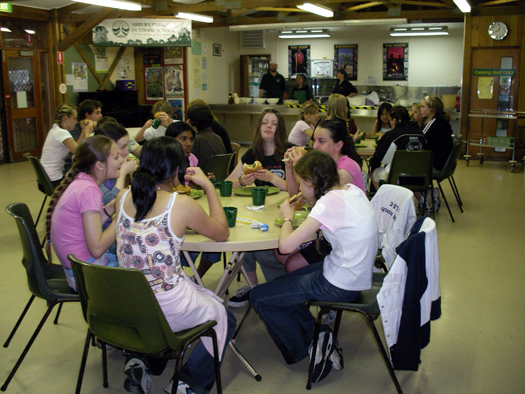
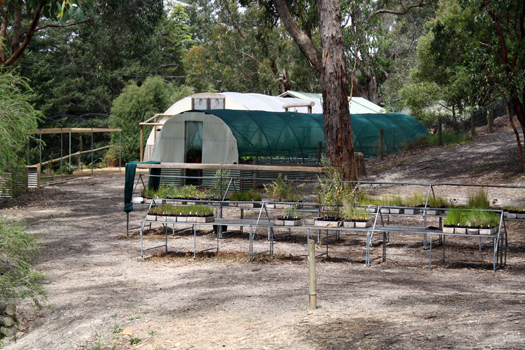
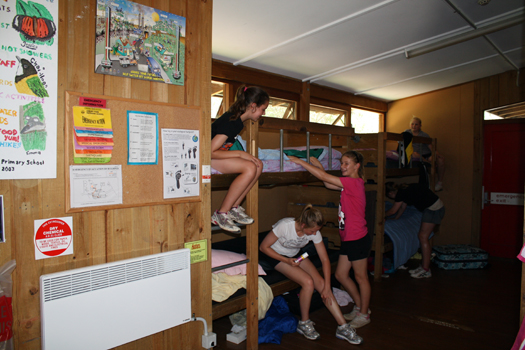
Exploring Ecology
In these activities, students explore the connections between local animals and their habitats. Key concepts include: survival needs, adaptations, food chains, interrelationships.
The learning intentions for each activity can be modified to suit the year levels indicated.
Examples of Australian
Curriculum links
After the Fire (3-9)
Students visit an area of stringybark forest burnt in 2013. They observe, discuss and record the effects of bushfire, and plant recovery strategies. Science
Year 4 (ACSSU072)
Year 5 (ACSSU043)
Year 6 (ACSHE098)
Geography
Year 5 (ACHGK030)
Animal Survival (R-9)
Students learn about animal adaptations, classification and interrelationships using living and preserved animals in our Ecocentre. Science
Year 1 (ACSSU017)
Year 3 (ACSSU044)
Year 5 (ACSSU043)
Year 7 (ACSSU111)
Bird Ecology (R-9)
Students practise the skills of bird watching and identification. They observe bird behaviour and discuss how different species fit into the overall ecology of different habitats. A collection of stuffed bird specimens allows close examination. Science
Year 1 (ACSSU017)
Year 1 (ACSSU211)
Year 4 (ACSSU073)
Year 5 (ACSSU043)
Year 7 (ACSSU111)
Catchment Walk (4-9)
With the aid of maps and a 3D model, students walk around school and neighbouring property, exploring the concept of a catchment and examining the effect of land use on water drainage and quality. Geography
Year 5 (ACHGK027) Year 7 (ACHGK037)
Year 7 (ACHGS051)
Science
Year 4 (ACSHE062)
Year 7 (ACSSU222)
Freshwater Life (R-9)
Students collect samples of invertebrates using nets and observe them using magnifiers, microscopes and video camera. They explore feeding relationships, adaptations for survival and habitat requirements of freshwater life. Science
F (ACSSU002)
Year 1 (ACSSU017)
Year 4 (ACSSU073) Year 5 (ACSSU043)
Year 7 (ACSSU112)
Looking for Evidence (3-9)
Students become "bush detectives" by searching for evidence of animal life in the stringybark forest. Many animals are hard to see due to their behaviour or appearance, but skilled detectives can find evidence of them by careful observation. Science
Year 3 (ACSSU044)
Year 5 (ACSIS086)
Year 7 (ACSSU111)
Natures Recyclers (R-9)
Students look for fungi and leaf litter invertebrates, and observe them using magnifiers and microscopes. The focus is on how nature's recyclers release nutrients locked in dead plant and animal material and return them to the soil. Science
Year 1 (ACSSU211)
Year 4 (ACSSU072)
Year 7 (ACSSU112)
Year 9 (ACSSU176)
Weather Trail (5-9)
Students use different devices to measure aspects of the weather in different parts of the school grounds. A trail leads students to investigate how local features can create microclimates. Mathematics
Year 4 (ACMMG084)
Year 5 (ACMSP118)
Science
Year 5 (ACSIS218)
Year 6 (ACSHE098)
Web of Life Game (R-9)
A simulation game in which students play the roles of predator and prey species. To survive they must locate 'food' and 'water' that is hidden in an open woodland area. The focus is on animal behaviour and survival strategies. Science
Year 7 (ACSSU112)
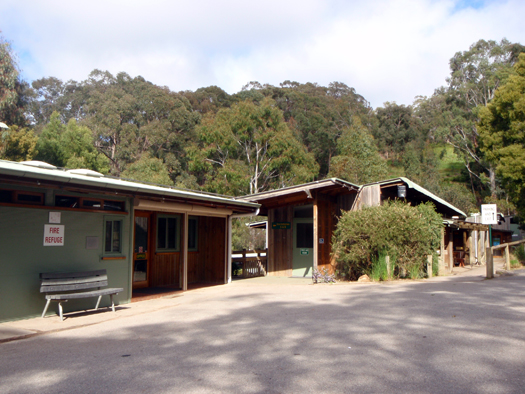

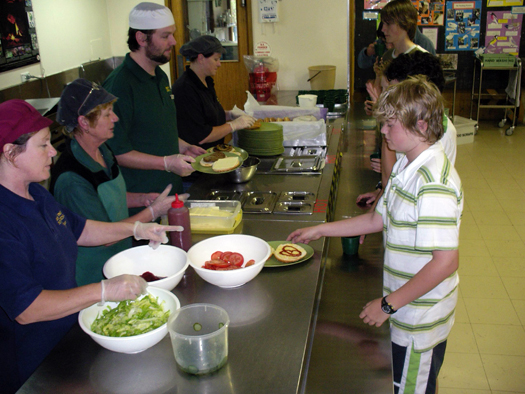
经历了…
1095天
186000公里
Soucamp,由乐行机构倾力打造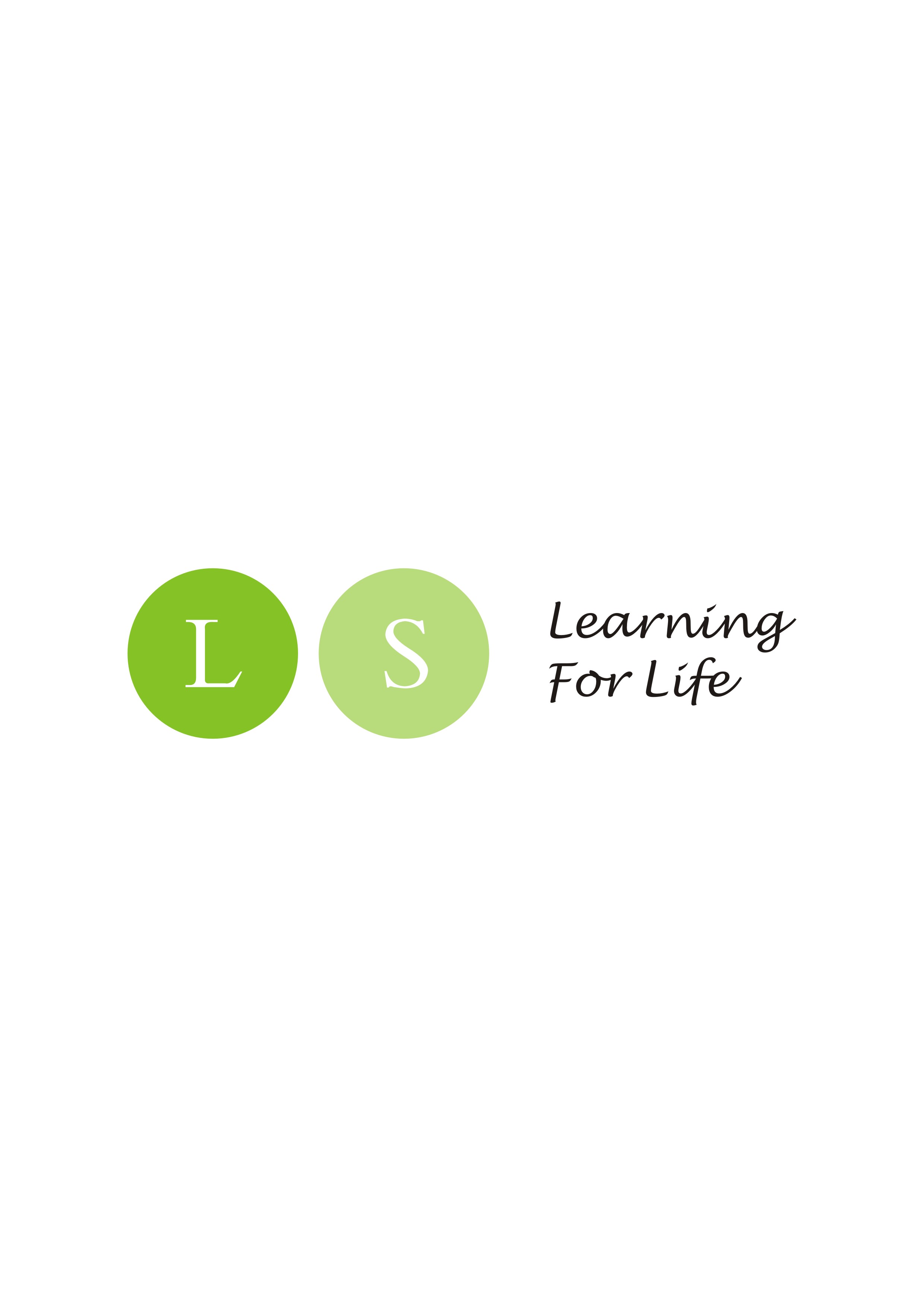
为青少年精选全球
5大洲,
26个国家,
5372个营地,
24185个活动项目,
It is all for LOVE.
So,Camping!
